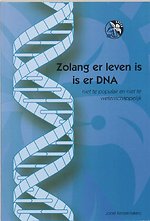Interpretation of MS–MS Mass Spectra of Drugs and Pesticides
Samenvatting
This book Provides comprehensive coverage of the interpretation of LC–MS–MS mass spectra of 1300 drugs and pesticides.
-Provides a general discussion on the fragmentation of even-electron ions (protonated and deprotonated molecules) in both positive-ion and negative-ion modes
-This is the reference book for the interpretation of MS–MS mass spectra of small organic molecules
-Covers related therapeutic classes of compounds such as drugs for cardiovascular diseases, psychotropic compounds, drugs of abuse and designer drugs, antimicrobials, among many others
-Covers general fragmentation rule as well as specific fragmentation pathways for many chemical functional groups
-Gives an introduction to MS technology, mass spectral terminology, information contained in mass spectra, and to the identification strategies used for different types of unknowns
Specificaties
Inhoudsopgave
Abbreviations xiii
1 Introduction to LC-MS Technology 1
1.1 Introduction 2
1.2 Analyte Ionization: Ion Sources 3
1.3 Mass Spectrometer Building Blocks 28
1.4 Tandem Mass Spectrometry 37
1.5 Data Acquisition 43
1.6 Selected Literature on Mass Spectrometry 45
2 Interpretation of Mass Spectra 55
2.1 Mass Spectrometry: A Nuclear Affair 55
2.2 Isomers, Isotones, Isobars, Isotopes 56
2.3 Masses in MS 58
2.4 Isotopes and Structure Elucidation 60
2.5 Nitrogen Rule, Ring Double-Bond Equivalent, and Hydrogen Rule 61
2.6 Resolving Power, Resolution, Accuracy 63
2.7 Calculating Elemental Composition from Accurate m/z 66
2.8 Protonated and Deprotonated Molecules and Adduct Ions 67
3 Fragmentation of Even-Electron Ions 71
3.1 Introduction 72
3.2 Analyte Ionization Revisited 73
3.3 Fragmentation of Odd-electron Ions 74
3.4 High-energy Collisions of Protonated Molecules 76
3.5 Fragmentation of Protonated Molecules 81
3.6 Characteristic Positive-ion Fragmentation of Functional Groups 94
3.7 Fragmentation of Deprotonated Molecules 102
3.8 Fragmentation of Metal-ion Cationized Molecules 108
3.9 Generation of Odd-electron Ions in ESI-MS, APCI-MS, and APPI-MS 111
3.10 Useful Tables 112
4 Fragmentation of Drugs and Pesticides 129
4.1 Fragmentation of Drugs for Cardiovascular Diseases and Hypertension 134
4.2 Fragmentation of Psychotropic or Psychoactive Drugs 158
4.3 Fragmentation of Analgesic, Antipyretic, and Anti-Inflammatory Drugs 179
4.4 Fragmentation of Drugs Related to Digestion and the Gastrointestinal Tract 188
4.5 Fragmentation of Other Classes of Drugs 199
4.6 Fragmentation of Steroids 222
4.7 Fragmentation of Drugs of Abuse 241
4.8 Fragmentation of Antimicrobial Compounds 262
4.9 Fragmentation of Antimycotic and Antifungal Compounds 289
4.10 Fragmentation of Other Antibiotic Compounds 297
4.11 Pesticides 315
5 Identification Strategies 351
5.1 Introduction 351
5.2 Confirmation of Identity in Following Organic Synthesis 352
5.3 Confirmation of Identity in Targeted Screening by SRM-based Strategies 353
5.4 Confirmation of Identity by High-resolution Accurate-mass MS Strategies 356
5.5 Library Searching Strategies in Systematic Toxicological Analysis 357
5.6 Dereplication and Identification of Natural Products and Endogenous Compounds 360
5.7 Identification of Structure-related Substances 361
5.8 Identification of Known Unknowns and Real Unknowns 366
Compound Index 381
Subject Index
Vaak samen gekocht
Anderen die dit boek kochten, kochten ook
Net verschenen
Rubrieken
- aanbestedingsrecht
- aansprakelijkheids- en verzekeringsrecht
- accountancy
- algemeen juridisch
- arbeidsrecht
- bank- en effectenrecht
- bestuursrecht
- bouwrecht
- burgerlijk recht en procesrecht
- europees-internationaal recht
- fiscaal recht
- gezondheidsrecht
- insolventierecht
- intellectuele eigendom en ict-recht
- management
- mens en maatschappij
- milieu- en omgevingsrecht
- notarieel recht
- ondernemingsrecht
- pensioenrecht
- personen- en familierecht
- sociale zekerheidsrecht
- staatsrecht
- strafrecht en criminologie
- vastgoed- en huurrecht
- vreemdelingenrecht









